RQA Indicator Spotlight: record long inversion
In this month's indicator spotlight, we delve into the recent movements in treasury yields, with a particular focus on examining the spread between the 10-year note and the 2-year note to provide an update on the yield curve inversion. Yield curve inversions arise when shorter-term treasury yields surpass the yields on longer-term treasuries. These inversions attract significant attention due to their consistent track record of heralding impending U.S. recessions, as they have preceded nearly every major recession in recent history.
As depicted in the graphic below, we present the 10-year minus 2-year spread, highlighting periods of inversion alongside U.S. recessionary phases, depicted in shaded grey areas.
Source: U.S. Federal Reserve, Analysis by RQA
According to the prevailing theory, one of the primary factors contributing to a yield curve inversion is increasing risk aversion among bond market participants and the broader investing community becoming more wary on the economic outlook. Consequently, investors opt to purchase longer-dated treasuries as a means to safeguard their capital and secure longer-term risk-free rates. This trend exerts downward pressure on longer-dated yields compared to their shorter-term counterparts.
Given the current shape of the yield curve inversion against a backdrop of seemingly positive economic conditions, the inversion, and particularly its duration, continues to puzzle many market participants. To get a sense of inversion length, in the following graphic, we chart the length (in days) of previous yield curve inversion events that were longer than 3 months to gauge the duration of the most recent inversion.
Source: GFD, Bloomberg Finance LP & Deutsche Bank
According to the analysis, the current period of inversion has now surpassed all previous inversion events. Speculation abounds regarding the reasons behind this prolonged inversion, with some attributing it to unique productivity gains in the U.S. stemming from advances in technology, a more proactive stance taken by the Federal Reserve in terms of monetary policy, or structural shifts within equity and fixed income markets. However, it's crucial to recognize that while the indicator itself boasts a strong historical track record in forecasting recessions, pinpointing the timing of when a recession begins after its occurrence remains a challenging task.
Therefore, leveraging this dataset alongside other leading economic indicators is essential in forming a comprehensive understanding of our current growth trajectory and near-term prospects. Presently, monitoring the status of the inversion and, more importantly, anticipating when it might revert to a normalized yield curve will be instrumental in providing insights moving forward.
Economic Forecast Model
In February, there was another discernible increase in the RQA Economic Forecast Model, with a rise from 0.43 to 0.50 compared to the previous month. This continued positive trend in the model’s readings provides us with further conviction of healthy momentum underlying the fundamental economy in the U.S. in the near-term.
Source: Analysis by RQA. Data from U.S. Federal Reserve; Bureau of Labor Statistics; Norgate Premium Data; Institute for Supply Management
The RQA Economic Forecast Model represents a consolidated composite of key economic leading indicators and market-based explanatory variables. The goal of this composite model is to present a holistic measure of primary U.S. economic growth drivers and their trends over time. (Additional detail on the model’s construction is provided here.)
Values above the zero-line are indicative of positive U.S. economic growth expectations in the near-term, and therefore, indicate economic strength and lesser chance of recessionary pressure. On the other hand, values below the zero-line represent the opposite - a more negative outlook and more elevated probabilities of the U.S. experiencing an economic contraction.
TAKING A CLOSER LOOK AT THE ECONOMIC DRIVERS
In the economic heatmap below, we are able to peak under the hood at a wide mix of underlying growth drivers in the U.S. economy. By reviewing this underlying data in more detail, we are better able to see how the underlying components of the U.S. economic growth picture are behaving through time. The indicators presented below have each proven to have predictive qualities in estimating the future direction of U.S. economic growth.
Source: Analysis by RQA. Data from U.S. Federal Reserve; Bureau of Labor Statistics; Norgate Premium Data; Institute for Supply Management
The latest trends in our leading indicator dataset paint a stabilizing but still somewhat mixed picture of the U.S. economy.
While nominal employment metrics remain steady and in a healthy range, indicating resilience in the job market, there appear to be continued declines in average weekly hours worked, which may suggest employer caution under the surface. (Note: In recent years, employers have been more reluctant to reduce headcounts, as finding and keeping capable workers has been more challenging in the post-COVID job market. But, reducing employee hours can be a way for employers to alleviate wage overhead without undergoing layoffs in the near term.)
Additionally, U.S. industrial and manufacturing continues along a downward trend, contrasting with a thriving services sector - and the residential real estate market in recent months has experienced a boost through an uptick in permits, signaling future construction and potential economic expansion.
Consumer sentiment appears positive, evidenced by rising incomes and increased spending, indicating confidence in future economic prospects. Moreover, the stock market's strong performance and narrowing credit spreads contrast with the ongoing inversion of the yield curve, reflecting short-term investor confidence alongside longer-term caution among bond market participants.
Finally, inflationary pressures continue to persist to a modest degree, adding complexity to the economic landscape as money supply growth slows down. This mix of indicators highlights an economy experiencing simultaneous growth and caution, with consumer-driven sectors advancing while production sectors and inflation measures continue to warrant careful monitoring.
MARKET REGIME DISCUSSION
As we approach the end of Q1 2024, the economic landscape continues to evolve. Inflation levels persist at moderate to elevated levels, particularly evident as oil and other commodities demonstrate multi-month gains. Despite these inflationary pressures coupled with a higher interest rate environment, economic trends remain increasingly positive according the RQA Economic Forecast model.
The Federal Reserve's recent announcement exhibiting a fairly dovish stance, suggesting the likelihood of three interest rate cuts materializing throughout the year, has further shaped market sentiment. This accommodative stance reflects the Fed's responsiveness to ongoing economic data, as it navigates the obligations of its dual mandate.
In summary, the current macroeconomic landscape remains firmly entrenched in the "inflationary boom" quadrant. This classification reflects the prevailing conditions characterized by robust economic growth amid inflationary pressures. Such an environment historically favors risk assets, including equities, real estate, commodities, and gold, despite the challenges posed by inflationary pressures on fixed income securities.
Source: RQA.






